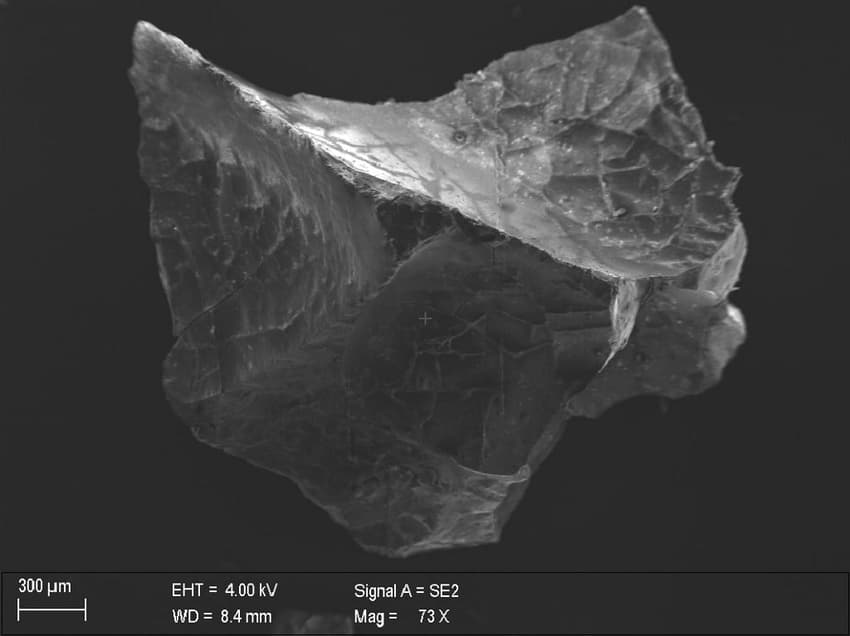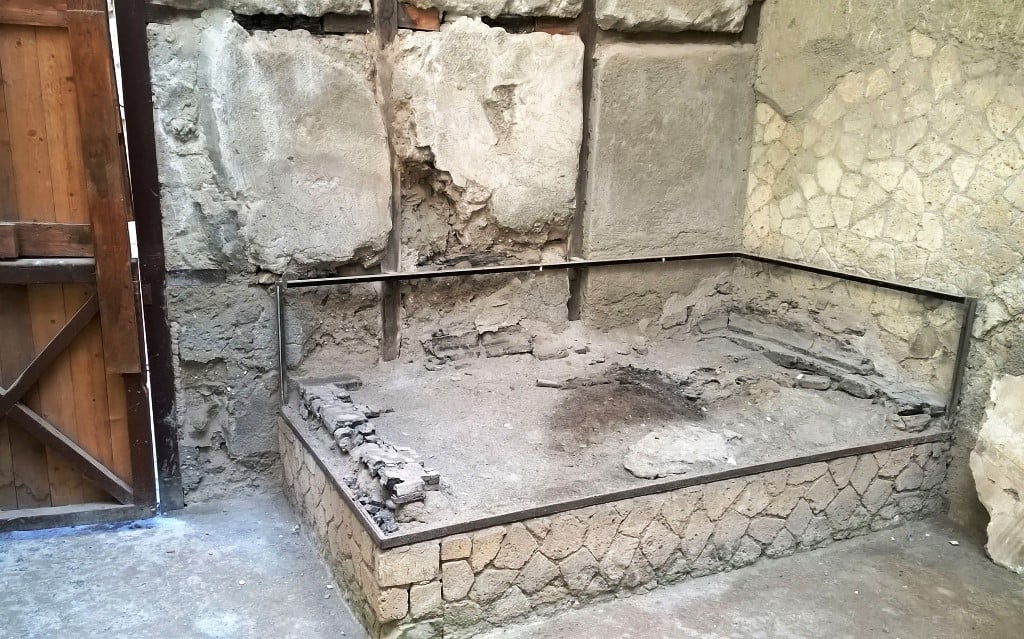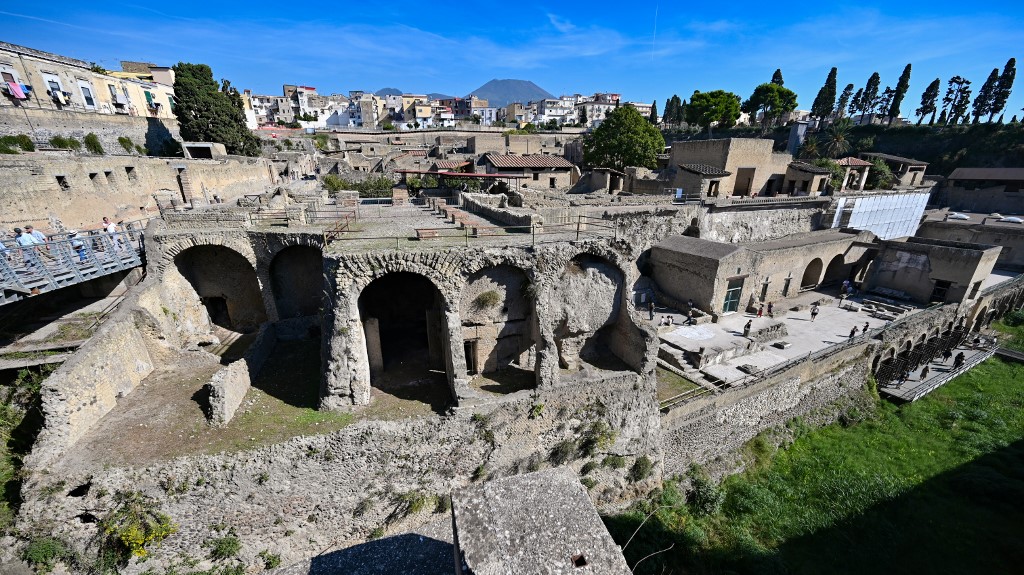Study finds 2,000-year-old brain cells of man killed in Vesuvius eruption

Brain cells have been found in exceptionally preserved form in the remains of a young man killed in the eruption of Mount Vesuvius almost 2,000 years ago, an Italian study has revealed.
The preserved neuronal structures in vitrified or frozen form were discovered at the archaeological site of Herculaneum, an ancient Roman city engulfed under a hail of volcanic ash after nearby Mount Vesuvius erupted in the year 79.
"The study of vitrified tissue as the one we found at Herculaneum... may save lives in future," study lead author Pier Paolo Petrone, forensic anthropologist at Naples' University Federico II, told AFP.
"The experimentation continues on several research fields, and the data and information we are obtaining will allow us to clarify other and newer aspects of what happened 2,000 years ago during the most famous eruption of Vesuvius," said Petrone.
The victim whose samples were examined was a man aged around 20 whose remains were discovered in the 1960s splayed on a wooden bed.

The bed where the man's remains were found. Photo: Handout/Pier Paolo Petrone University of Naples Federico II/AFP
The extreme heat of the eruption and the rapid cooling that followed essentially turned the brain material to a glassy material, freezing the neuronal structures and leaving them intact, Petrone explained in the study, published this month by US peer-reviewed science journal PLOS ONE.
"The evidence of a rapid drop of temperature -- witnessed by the vitrified brain tissue -- is a unique feature of the volcanic processes occurring during the eruption, as it could provide relevant information for possible interventions by civil protection authorities during the initial stages of a future eruption," according to Petrone.
READ ALSO:
-
Where are Italy's active volcanoes?
-
Italy launches international search for new Pompeii site director
-
Archaeologists uncover remains of Vesuvius victim 'decapitated while trying to flee'
Vesuvius' eruption covered Herculaneum in a toxic, metres-thick layer of volcanic ash, gases and lava flow which then turned to stone, encasing the city, allowing an extraordinary degree of frozen-in-time preservation both of city structures and of residents unable to flee.
Herculaneum, named after the Greek god Hercules, was a popular resort town for the rich northwest of Pompeii when Vesuvius erupted.
The man at the centre of the discovery is believed to have been the custodian of the College of the Augustales, centre of the cult of Emperor Augustus.
 Herculaneum in the shadow of Mount Vesuvius. Photo: Andreas Solaro/AFP
Herculaneum in the shadow of Mount Vesuvius. Photo: Andreas Solaro/AFP
Researchers believe the heat rose to 520 degrees Celsius from the hot gasses from the eruption – hot enough to make body fat ignite and vaporise soft tissues. A rapid drop in temperature ensued, a poorly-understood phenomenon that nevertheless helped vitrify human remains.
As they investigated the organic material turned up by the study, researchers managed to obtain unprecedented high resolution imagery using scanning electron microscopy and advanced image processing tools.
With the post-eruption preservation locking in the cellular structure of the victim's central nervous system, researchers have seized on the chance "to study possibly the best known example in archaeology of extraordinarily well-preserved human neuronal tissue from the brain and spinal cord," PLOS ONE noted.
Comments
See Also
The preserved neuronal structures in vitrified or frozen form were discovered at the archaeological site of Herculaneum, an ancient Roman city engulfed under a hail of volcanic ash after nearby Mount Vesuvius erupted in the year 79.
"The study of vitrified tissue as the one we found at Herculaneum... may save lives in future," study lead author Pier Paolo Petrone, forensic anthropologist at Naples' University Federico II, told AFP.
"The experimentation continues on several research fields, and the data and information we are obtaining will allow us to clarify other and newer aspects of what happened 2,000 years ago during the most famous eruption of Vesuvius," said Petrone.
The victim whose samples were examined was a man aged around 20 whose remains were discovered in the 1960s splayed on a wooden bed.

The bed where the man's remains were found. Photo: Handout/Pier Paolo Petrone University of Naples Federico II/AFP
The extreme heat of the eruption and the rapid cooling that followed essentially turned the brain material to a glassy material, freezing the neuronal structures and leaving them intact, Petrone explained in the study, published this month by US peer-reviewed science journal PLOS ONE.
"The evidence of a rapid drop of temperature -- witnessed by the vitrified brain tissue -- is a unique feature of the volcanic processes occurring during the eruption, as it could provide relevant information for possible interventions by civil protection authorities during the initial stages of a future eruption," according to Petrone.
READ ALSO:
- Where are Italy's active volcanoes?
- Italy launches international search for new Pompeii site director
- Archaeologists uncover remains of Vesuvius victim 'decapitated while trying to flee'
Vesuvius' eruption covered Herculaneum in a toxic, metres-thick layer of volcanic ash, gases and lava flow which then turned to stone, encasing the city, allowing an extraordinary degree of frozen-in-time preservation both of city structures and of residents unable to flee.
Herculaneum, named after the Greek god Hercules, was a popular resort town for the rich northwest of Pompeii when Vesuvius erupted.
The man at the centre of the discovery is believed to have been the custodian of the College of the Augustales, centre of the cult of Emperor Augustus.
 Herculaneum in the shadow of Mount Vesuvius. Photo: Andreas Solaro/AFP
Herculaneum in the shadow of Mount Vesuvius. Photo: Andreas Solaro/AFP
Researchers believe the heat rose to 520 degrees Celsius from the hot gasses from the eruption – hot enough to make body fat ignite and vaporise soft tissues. A rapid drop in temperature ensued, a poorly-understood phenomenon that nevertheless helped vitrify human remains.
As they investigated the organic material turned up by the study, researchers managed to obtain unprecedented high resolution imagery using scanning electron microscopy and advanced image processing tools.
With the post-eruption preservation locking in the cellular structure of the victim's central nervous system, researchers have seized on the chance "to study possibly the best known example in archaeology of extraordinarily well-preserved human neuronal tissue from the brain and spinal cord," PLOS ONE noted.
Join the conversation in our comments section below. Share your own views and experience and if you have a question or suggestion for our journalists then email us at [email protected].
Please keep comments civil, constructive and on topic – and make sure to read our terms of use before getting involved.
Please log in here to leave a comment.